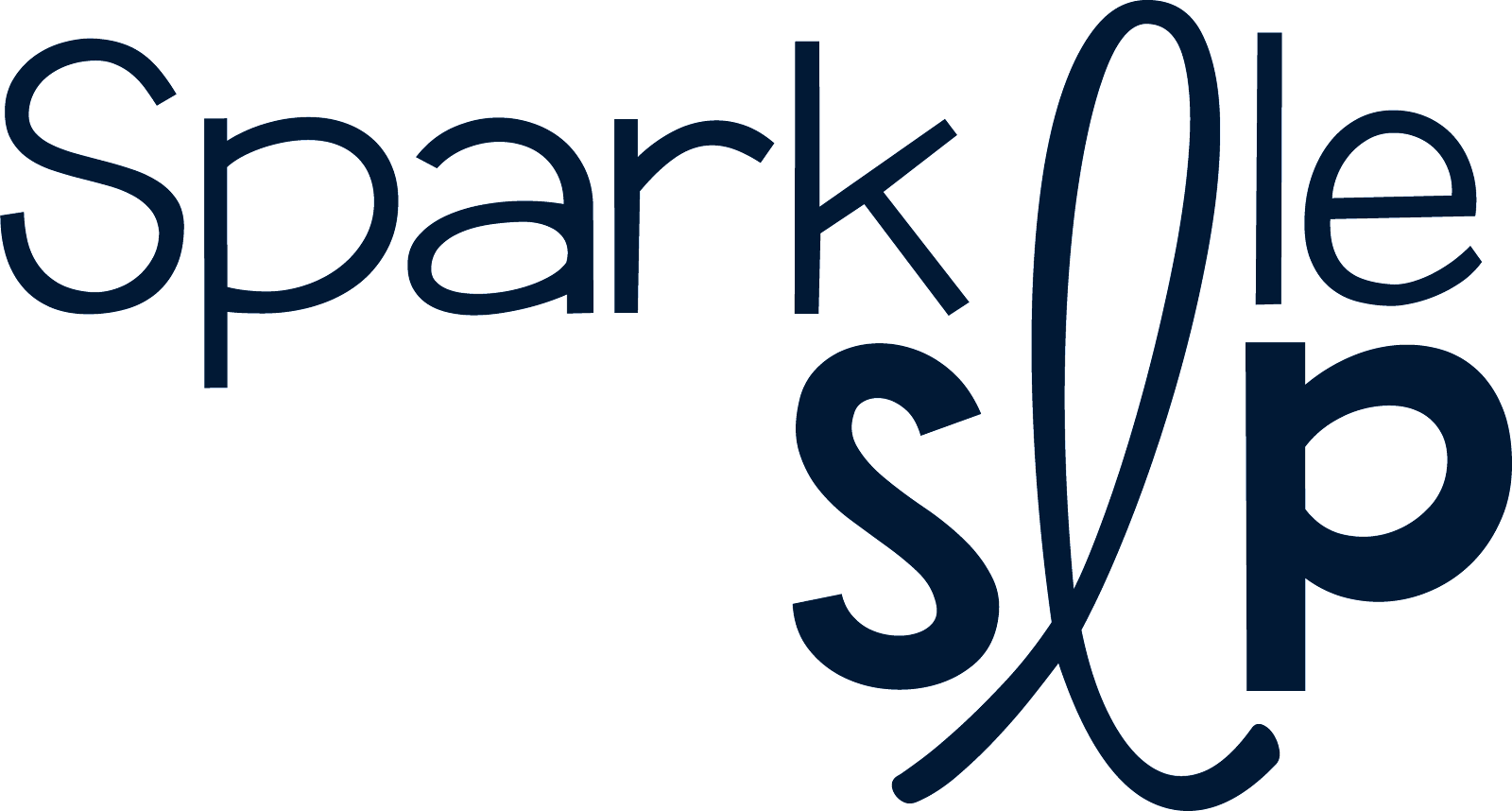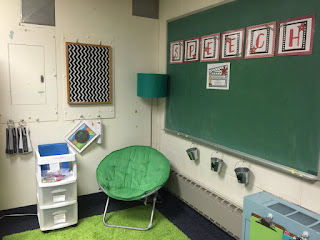Let's just start by saying I don't usually cook at all. I love to eat and I graze all day long, but as for cooking, it has never been my thing. So, what's a girl to do when The Frenzied SLPs are hosting a Quick and Easy Recipes for Frenzied SLPs link up? Do my best to stretch the topic.
I'm not currently prepping my meals (I do hope to jump on the bandwagon again.), but I joined the 5 Dinners 1 Hour yearly plan about 2 years ago for a year (I found a huge discount code that saved about 40% off the fee). Although that site and arrangement have been updated, I received weekly menus each month, at the time. (I have no affiliation with this company. These are just my opinions and experiences.) I printed and placed each month in a sheet protector and into a binder (in true SLP fashion). Here is where my binder sits currently.
I would cart the whole binder to the store or just the page protected menu and follow the grocery list. The weekly menu had options for meals that could be frozen for use later, as well. I bought everything fresh, prepped my 5 meals in 1 hour (seriously), and then went back to my daily preferred activities.
Each day/evening, I pulled out the prepped contents and tackled dinner in no time flat. I even made this cute menu planner which still hangs on my wall.
This post is definitely giving me the itch to start up my meal planning again!
Before we both jump to another post to actually obtain a quick and easy recipe, I'm also sharing my lunch organization bins. These are perfect for the frenzied SLP and also increase child independence! Win! Win! Each Sunday evening, I fill these bins with lunch choices and pop them back into the fridge. Every morning, my kids grab and pack their desired choices. That's right, I don't make my kids' lunches and I'm totally okay with letting that go!
So now that you had a peek into my meal planning organization, go check out some quick and easy recipes for frenzied SLPs below or share your recipe in the comments!
I'm not currently prepping my meals (I do hope to jump on the bandwagon again.), but I joined the 5 Dinners 1 Hour yearly plan about 2 years ago for a year (I found a huge discount code that saved about 40% off the fee). Although that site and arrangement have been updated, I received weekly menus each month, at the time. (I have no affiliation with this company. These are just my opinions and experiences.) I printed and placed each month in a sheet protector and into a binder (in true SLP fashion). Here is where my binder sits currently.
I would cart the whole binder to the store or just the page protected menu and follow the grocery list. The weekly menu had options for meals that could be frozen for use later, as well. I bought everything fresh, prepped my 5 meals in 1 hour (seriously), and then went back to my daily preferred activities.
 |
| Here is an old picture of a time when I prepped meals for a friend. |
This post is definitely giving me the itch to start up my meal planning again!
Before we both jump to another post to actually obtain a quick and easy recipe, I'm also sharing my lunch organization bins. These are perfect for the frenzied SLP and also increase child independence! Win! Win! Each Sunday evening, I fill these bins with lunch choices and pop them back into the fridge. Every morning, my kids grab and pack their desired choices. That's right, I don't make my kids' lunches and I'm totally okay with letting that go!
So now that you had a peek into my meal planning organization, go check out some quick and easy recipes for frenzied SLPs below or share your recipe in the comments!











%20(2).png)














